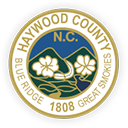Cleaning Up After a Successful Hatch
go.ncsu.edu/readext?929766
en Español / em Português
El inglés es el idioma de control de esta página. En la medida en que haya algún conflicto entre la traducción al inglés y la traducción, el inglés prevalece.
Al hacer clic en el enlace de traducción se activa un servicio de traducción gratuito para convertir la página al español. Al igual que con cualquier traducción por Internet, la conversión no es sensible al contexto y puede que no traduzca el texto en su significado original. NC State Extension no garantiza la exactitud del texto traducido. Por favor, tenga en cuenta que algunas aplicaciones y/o servicios pueden no funcionar como se espera cuando se traducen.
Português
Inglês é o idioma de controle desta página. Na medida que haja algum conflito entre o texto original em Inglês e a tradução, o Inglês prevalece.
Ao clicar no link de tradução, um serviço gratuito de tradução será ativado para converter a página para o Português. Como em qualquer tradução pela internet, a conversão não é sensivel ao contexto e pode não ocorrer a tradução para o significado orginal. O serviço de Extensão da Carolina do Norte (NC State Extension) não garante a exatidão do texto traduzido. Por favor, observe que algumas funções ou serviços podem não funcionar como esperado após a tradução.
English
English is the controlling language of this page. To the extent there is any conflict between the English text and the translation, English controls.
Clicking on the translation link activates a free translation service to convert the page to Spanish. As with any Internet translation, the conversion is not context-sensitive and may not translate the text to its original meaning. NC State Extension does not guarantee the accuracy of the translated text. Please note that some applications and/or services may not function as expected when translated.
Collapse ▲Now that your hatch is complete and you have had your chicks in the classroom for a couple of very distracting days (2nd graders LOVE chicks), it is time to wrap up your 4-H Embryology project.
Where do the chicks go?
If you have chickens or know someone at your school who has chickens, feel free to give them the chicks. If you need somewhere for the chicks to go, bring them by the extension office when you drop off the rest of your embryology supplies and we’ll find somewhere for them to go. Disclaimer: our chicks are not vaccinated and do not come with any guarantees!
Cleaning a Brooder
The plastic tub and feeder/waterer set-ups can all be hand-washed and fully immersed in water. The heat plate CAN NOT be immersed in water, it has electric components built-in. Use a damp cloth with the cleaner to wipe it down and clean the top of it. Any extra bedding or feed is fine to be thrown away with the regular trash.
Cleaning the Incubator
Incubators have electric components and SHOULD NOT be immersed in water. Use a damp cloth with cleaner to clean the incubator. You may need to use the included toothbrush to scrub the water wells after the hatch. It is very helpful if you clean the incubator right after moving the chicks to the brooder; everything is still wet and easier to get cleaned out. Once the residue from the hatch dries up, it takes some scrubbing to get clean.




